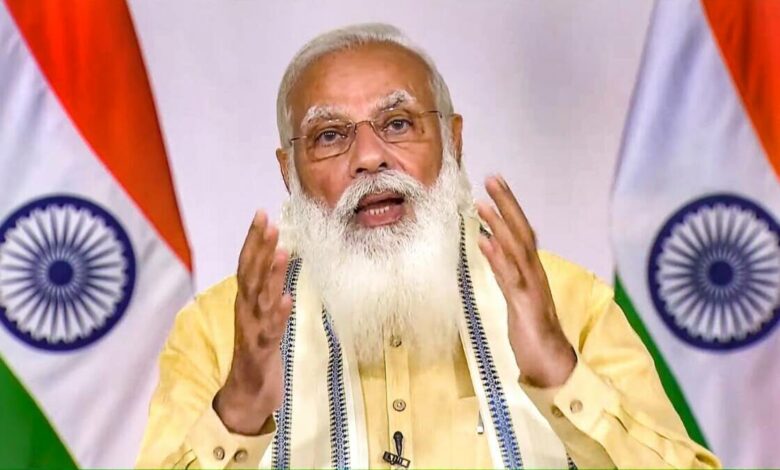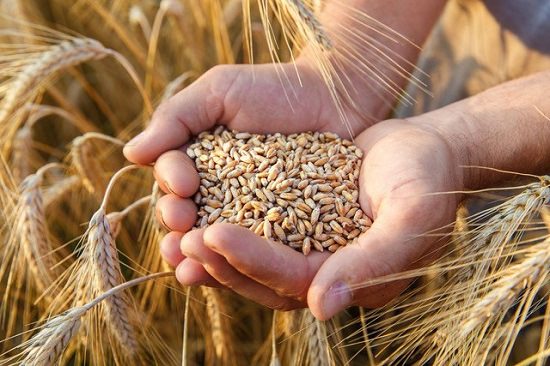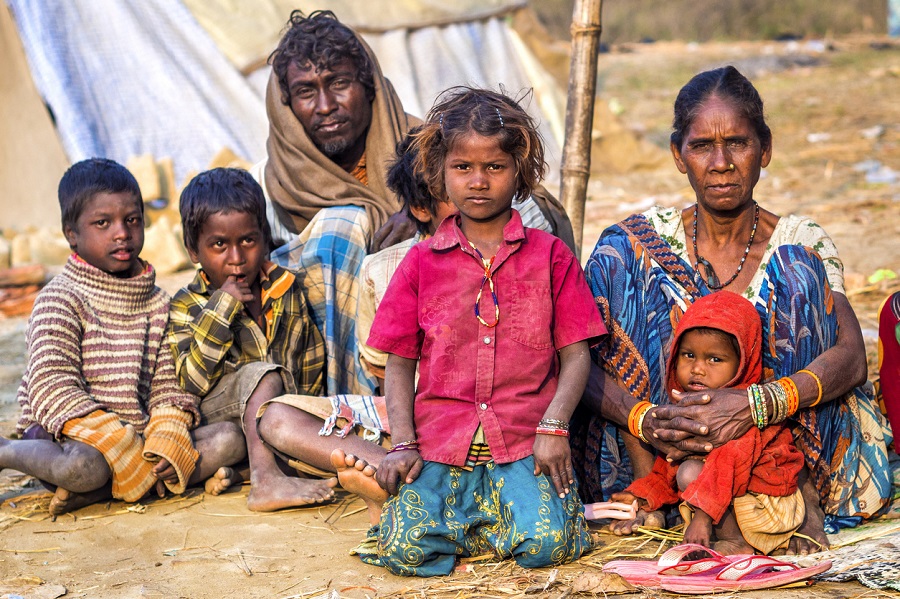Is India self-reliant enough to export foodgrains to the world in 2022?

Recently, Prime Minister Narendra Modi in a virtual address on Tuesday, while laying the foundation stone of the Jansahayak Trust Hiramani Arogyadham and inaugurated a hostel and an education complex by the Annapurna Dham Trust in Adalaj, on Monday night, while having a word with US President Joe Biden said that he offered to supply food grains to the world if the World Trade Organization (WTO) permits, amid the ongoing war between Russia and Ukraine, which was preceded by the Covid-19 crisis.

It had been expressed by Prime Minister Modi that for the last 2.5-3 years, since the spread of the coronavirus pandemic within the world, about 80 crore people of India have been provided free foodgrains. At the same time, he expressed his grief and said that the supply of petrol, diesel, and fertilizers is becoming difficult for several countries on the planet. With this, the situation of war has exposed the mutual interest of all the countries.
He also added that “with the continued threat of war, the food crisis has now emerged concerning issue over the world. On Monday, I had a conversation with the US President and I recommended that if the World Trade Organization gives permits, India can export foodgrains to the world. India has enough foodgrain for its countrymen and that we are now self-reliant to feed the planet.”
Meanwhile, Prime Minister Modi has praised the initiative of Chief Minister Bhupendra Patel articulated that our CM is determined and firm. I believed that with his leadership of modern approach to the state would reach new heights. Gujarat’s development has set new benchmarks for development. Under Bhupendrabhai’s leadership, we’ll only move forward.
PM Modi articulated that the traditions of Gujarat have always encouraged education, nutrition, and health, and therefore the Patidar community is behind the framework of those elements. Annapurna Dham has united all these segments. Maa Annapurna’s idol was stolen and taken away abroad decades back and was brought back from Canada to Kashi. In the past 7-8 years, several emblems of our culture have been brought back from abroad.
Prime Minister Modi added that “malnutrition isn’t lack of nutrition but rather ignorance about nutrition. With a scarcity of education, people aren’t aware of the needs of their bodies. The dining hall, of the Annapurna Dham Trust, can feed over 600 people but today I would assign a second job to Narrhari Bhai (Rajya Sabha MP Narhari Amin). While showing a video at the dining hall PM Modi stated that “Food is the first step towards health”.
India’s foodgrain status
The performance of India within the agriculture sector is commendable. Also, in the last seven years, India has presented a record performance in food grain production. The production of the country jumped to 275.11 million tones in 2016-17 from 217 million tones in 2006-07, simultaneously the total production of food grains in the country spurt to reach a record high of 31.06 million tones as per the Second Advance Estimates of major crops for the agriculture year 2021-22, unleashed by Ministry of Agriculture and Farmer Welfare. It has been expressed by the government that India is now capable of exporting as well as being self-sufficient.
On the flip side, according to the 2011 Census data and the Economic Survey of 2018-19 report, in our country there is about 93% of the total workforce is informal sector workers, and 22% of the population (65 million) of India is lives in urban slum areas. The lockdown after the coronavirus pandemic has increased the food crisis among the informal sector workers in India.
Recent studies revealed some disturbing reality that the covid-19 pandemic has shown the figures of the inferior healthcare sector, loss of income, food crisis together with the upliftment of poverty and unemployment within the country. The situation of the world and food system in the covid pandemic is become convulse, and India’s poor and hunger are being affected heighten than ever.

The Food and Agricultural Organisation (FAO) estimates nearly 40% of the food cultivated in India is lost or wasted per annum because of ineffective supply chains. A scarcity of cooling and warehouse facilities in India reveals that 20% of the complete food production gets lost before it reaches the marketplace.
The pandemic heightened the national food system. It’s upset local, regional and national supply chains, adding to the impact of the country’s food waste problem.
During 2020-21, the locust invasions were reported in 10 States Rajasthan, Madhya Pradesh, Punjab, Gujarat, Uttar Pradesh, Maharashtra, Chhattisgarh, Bihar, Haryana, and Uttarakhand.

The recent report of The Ministry of Women and child development articulated that “over 33 lakh of children in India are under the category of malnutrition and more than half of them fall in a severely malnourished category with highest among the state of Maharashtra, Bihar, and Gujarat.
The report released by NFHS stated that over 60% of child death is reported due to malnutrition as a result children with low immunity cannot fight against the disease. The surge in the number of malnutrition would also harm the development of the country. Notwithstanding, during the COVID-19 outbreak, millions of people lost their families and jobs, migrant and informal sector workers have faced the most challenging time, which included a shortage of food and left pregnant women and children without access to adequate food with required nourishment.

Hunger Watch has released the reported survey after the coronavirus pandemic which shows some disturbing reality that the members of low-income families now eat less nutritious food than pre lockdown. These figures show the malnutrition highlights of the country which indicates that if the government has claimed enough foodgrain for their countrymen then why do the people sleep on an empty stomach or have a heightened rate of malnutrition.

The irony of the Global Hunger Index
Honorable Prime Minister Narendra Modi said during the conversation with the US President that he is ready to meet the demand for foodgrains production in the world. But see the irony that India’s performance is 101 out of 116 countries with a score of 27.5 in the Global Hunger Index 2021, which shows that India’s poverty is worrying.
The dissemination of wasting in children under five in India surged in 2021 compared to 2012. Along with in GHI 2020 report India ranked 94th which is behind its neighboring countries Pakistan, Bangladesh, and Nepal.
The Bottom-line
The covid-19 pandemic has posed many unprecedented challenges before the country, which is for the government and all the citizens of the country, to solve which is a big challenge for any country.
India, which is the world’s largest democratic country, is also the country with the largest population of starved people; we need to confront the current local and national economic and social problems. At the same time, India itself needs to be able to supply food for its countrymen first than export to the world nations.




